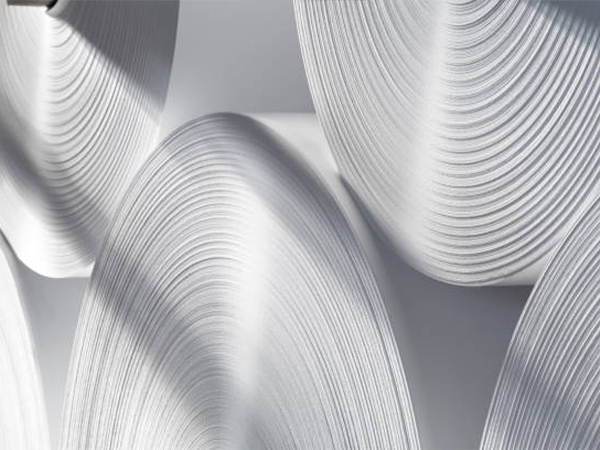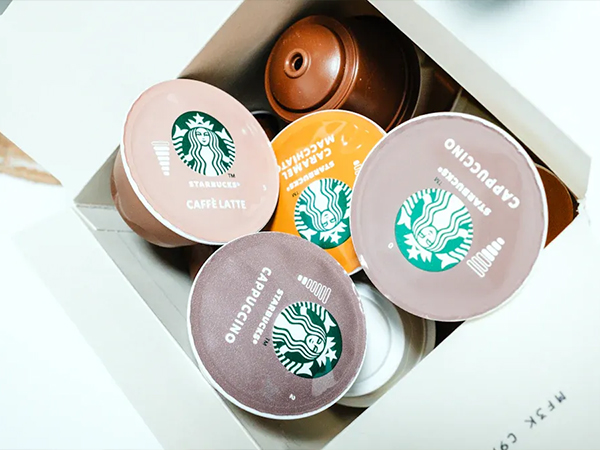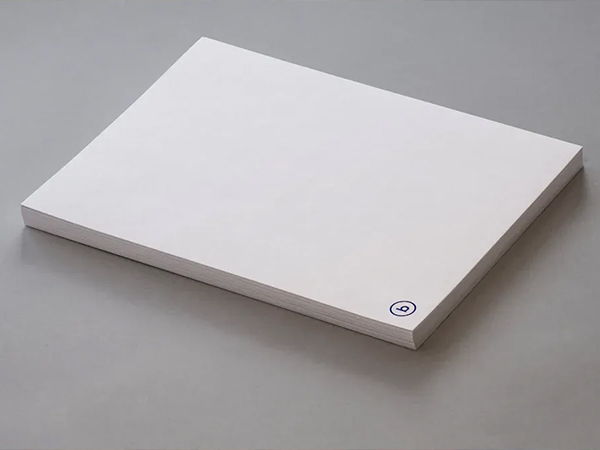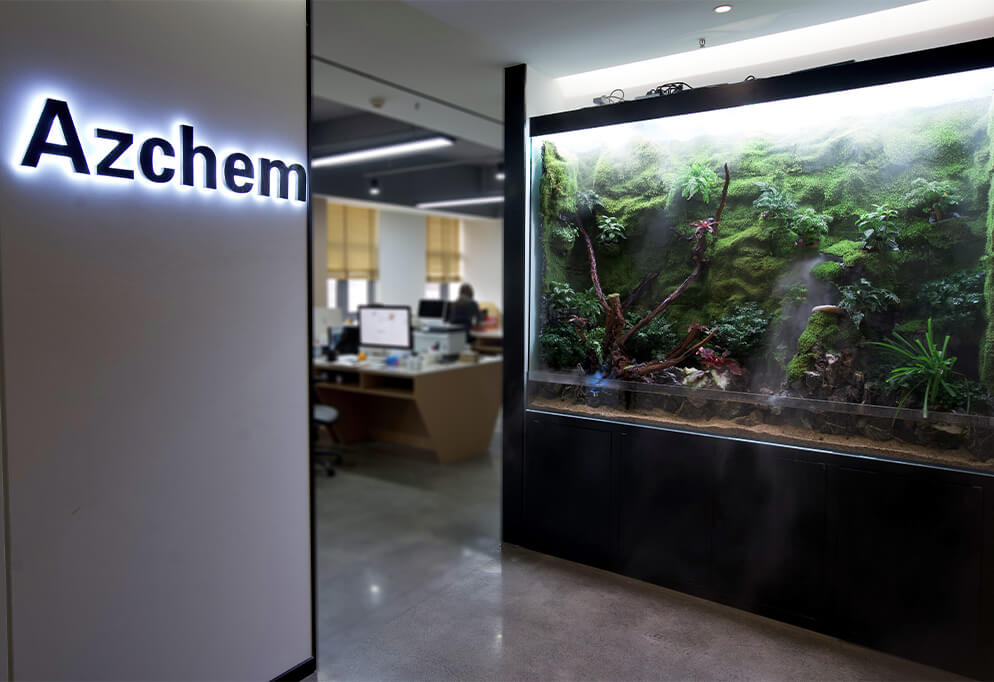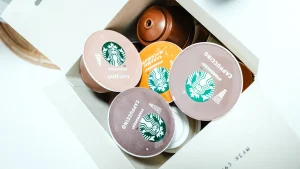
You rely on vibrant, consistent packaging colors to capture attention and establish your brand’s identity. Paper dyes play a crucial role in this process, delivering the vivid hues that make packaging memorable. In fact, 70% of colored paper usage goes toward packaging applications, showing their widespread influence.
| Trend/Statistic | Description |
|---|---|
| Market Position | The packaging industry ranks as the third largest globally, following the food and energy sectors. |
| Growth Drivers | Increased demand from food delivery and e-commerce sectors is driving the need for paper packaging and consequently, paper dyes. |
With the rise of e-commerce and food service, you see demand for paper dyes growing rapidly—especially as consumers seek sustainable, high-quality packaging.
Key Takeaways
- Vibrant packaging colors capture attention and enhance brand identity, making paper dyes essential for memorable packaging.
- Paper dyes penetrate deeply into paper fibers, ensuring long-lasting and uniform color that resists fading and washing.
- Customization of colors using paper dyes allows brands to reflect their unique identity and maintain consistency across product lines.
- High-quality paper dyes improve packaging performance by offering enhanced color stability and resistance to environmental factors.
- Consistent use of color in packaging can increase brand recognition by up to 80%, fostering trust and loyalty among consumers.
- Innovations in dye chemistry, such as eco-friendly options, support sustainability goals while maintaining color quality.
- Implementing quality control measures, like real-time monitoring, ensures consistent color across production batches, enhancing brand reputation.
- Choosing the right paper dye based on application needs and conducting small batch tests can optimize color quality and performance.
Paper Dyes in Packaging
What Are Paper Dyes
You encounter paper dyes every time you see colored packaging, from vibrant gift boxes to branded shopping bags. Paper dyes are specialized colorants designed to penetrate paper fibers, creating a uniform and lasting color throughout the material. Unlike pigments, which only coat the surface, these dyes bond with the cellulose in paper, resulting in deeper, more durable coloration. This unique property ensures that your packaging maintains its visual appeal even after handling or exposure to light.
Note: Paper dyes offer stable solubility, high tint strength, and excellent resistance to fading or washing. Many options are also environmentally friendly, supporting your sustainability goals.
Types of Paper Dyes
You can choose from several types of paper dyes, each suited for specific packaging needs. The most common types include basic dyes and direct dyes. Basic dyes work well for tinting papers in the writing industry and for achieving bright colors on cardboard. You often find them in packaging paper, facial tissue, envelopes, cover papers, corrugated cases, and specialty papers. Direct dyes have gained popularity for their versatility. They are used in envelopes, boards, decorative paper, labels, laundry bags, and posters.
Here’s a quick overview of the advantages you gain from using modern paper dyes:
| Advantage | Description |
|---|---|
| Wide range of colors | Select any shade, from subtle pastels to bold, intense hues. |
| High opacity | Achieve low transparency for a striking visual effect. |
| Vivid, even colors | Ensure consistent color throughout your packaging. |
| No white edges at cut-outs/bends | Maintain a clean, professional finish. |
| Long-lasting color | Prevent color from rubbing off or fading over time. |
| Refinement and treatment options | Apply various finishes or bookbinding treatments as needed. |
How Paper Dyes Work
Paper dyes interact with cellulose fibers through a complex chemical process. When you add dye to paper pulp, the molecules bind to the fibers using intermolecular forces such as electrostatic charges, Van der Waals forces, and hydrogen bonds. The π electrons in the dye molecules cooperate with the electrons in the cellulose’s hydroxyl groups, ensuring a strong and lasting bond. This process allows the color to penetrate deep into the paper, rather than sitting on the surface.
You benefit from this technology by achieving packaging that stands out for its vibrancy and durability. The board and packaging segment continues to grow rapidly, driven by demand for high-quality, colorful packaging across industries like food delivery, e-commerce, and specialty retail. By understanding how paper dyes work, you can make informed choices that enhance both the appearance and performance of your packaging.
Color Quality Benefits
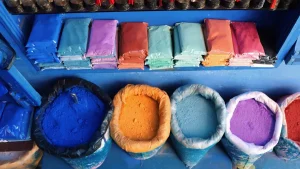
Vibrancy and Uniformity
You want your packaging to stand out on the shelf and leave a lasting impression. Achieving vibrant and uniform colors is essential for this goal. Paper dyes deliver superior vibrancy compared to alternative coloring methods. They penetrate cellulose fibers, ensuring even and durable coloration throughout the material. Basic dyes, in particular, offer exceptional brightness and high tinctorial strength, which are crucial for producing bold, eye-catching colors.
You also benefit from advanced liquid dyes and precise wet-end chemistry. These innovations help you achieve consistent color application and minimize defects such as streaks or uneven patches. As a result, your packaging maintains a professional appearance, even after repeated handling or exposure to light.
- Paper dyes penetrate deep into the paper, resulting in long-lasting, vivid colors.
- Basic dyes provide high brightness and strong color intensity.
- Controlled application processes ensure uniformity and reduce color inconsistencies.
Tip: Consistent color quality across your packaging not only enhances visual appeal but also strengthens your brand’s reliability in the eyes of consumers.
Customization
You need packaging that reflects your unique brand identity. Paper dyes enable you to customize colors for different product lines, seasonal campaigns, or special editions. This flexibility allows you to match your packaging precisely to your brand’s signature colors, ensuring a cohesive and recognizable look across all products.
| Application Segment | Description |
|---|---|
| Printing & Writing | Dyes are used in various printing applications, allowing for brand-specific color matching. |
| Coated Paper | Enhances the visual appeal of packaging through customized colors. |
| Packaging & Board | The largest segment, indicating significant use of dyes for brand packaging customization. |
| Decorative Laminated Paper | Offers aesthetic options for brands looking to stand out. |
| Newsprint Applications | Provides color options for promotional materials, aligning with brand identity. |
You can choose tailor-made blends to achieve your desired shades or select single components for specific color needs. Enhanced optical and functional properties further improve your brand representation. By carefully mixing pigments during production, you ensure that your packaging aligns perfectly with your marketing strategies and brand guidelines.
- Tailor-made blends allow for unique shades.
- Single components address specific color requirements.
- Enhanced properties support better brand visibility.
Functional Performance
You expect your packaging to perform well under various conditions. Paper dyes contribute to this by offering enhanced color stability and resistance to environmental factors. These dyes maintain their color integrity over time, resisting fading from sunlight and moisture. This durability ensures that your packaging looks fresh and appealing throughout its lifecycle.
- Enhanced color stability protects against fading from light and moisture.
- Resistance to bleeding and washout prevents color transfer, keeping packaging vibrant.
- Reliable performance supports the integrity of your brand image.
Note: Choosing high-quality paper dyes helps you maintain both the appearance and functionality of your packaging, even in demanding environments.
Impact on Brand Value

Brand Recognition
You want your brand to stand out in a crowded marketplace. Packaging color plays a powerful role in making your products instantly recognizable. When you use consistent, high-quality colors, you help customers identify your brand at a glance. Research shows that color can enhance brand recognition by up to 80%. Familiar colors not only catch the eye but also build trust and loyalty over time. For example, blue often signals stability and confidence, while red and yellow can create excitement or stimulate appetite. By choosing the right hues and ensuring they remain vibrant through advanced paper dyes, you reinforce your brand’s identity every time a customer sees your packaging.
- Color increases brand recognition by up to 80%.
- Consistent use of color fosters trust and loyalty.
- Specific colors evoke emotions that align with your brand values.
Tip: Select colors that reflect your brand’s personality and use them consistently across all packaging to maximize recognition.
Consumer Perception
You shape how consumers feel about your products through your packaging choices. The colors you select influence emotional and psychological responses. When you use vibrant, uniform colors, you signal quality and attention to detail. Customers often associate well-designed packaging with premium products. If your packaging looks faded or inconsistent, consumers may question the quality inside.
You can use color psychology to your advantage. Blue packaging can make your brand appear trustworthy and reliable. Red and yellow can create a sense of urgency or excitement, which works well for limited-time offers or impulse buys. By leveraging paper dyes that deliver lasting, vivid colors, you ensure your packaging always makes a positive impression.
- Vibrant colors suggest high quality and care.
- Color choices influence emotions and buying decisions.
- Consistent, attractive packaging builds positive perceptions.
Note: First impressions matter. High-quality packaging color can turn a casual shopper into a loyal customer.
Product Differentiation
You face intense competition on store shelves and online marketplaces. Distinctive packaging color helps your products stand out and attract attention. When you use unique color schemes or motifs, you create a visual identity that sets your brand apart. Several brands have successfully used packaging color to carve out a niche in competitive markets.
- Patanjali Ayurveda transformed its packaging from basic plastics to glass and paperboard with distinctive colors and motifs. This change helped the brand capture significant market share and become India’s largest FMCG brand.
- Amul retained its vintage polka-dot packaging while updating designs for new products. This approach balanced nostalgia with modern appeal, making Amul India’s most trusted food brand.
- Paper Boat used vibrant, ethnic packaging to evoke nostalgia for traditional drinks. This strategy created a new beverage category and attracted young consumers.
You can draw inspiration from these examples. By investing in innovative paper dyes and creative design, you give your products a competitive edge. Unique, memorable packaging color not only attracts new customers but also encourages repeat purchases.
Block Quote: “Distinctive packaging color is not just about aesthetics—it is a strategic tool for brand growth and market leadership.”
Innovations and Trends
Premium and Liquid Dyes
You now have access to premium and liquid dyes that transform how you approach packaging design and production. Liquid dyes, in particular, offer several advantages over traditional powder forms. These dyes arrive pre-dissolved in water or solvent, so you can use them immediately without extra dispersion steps. This feature makes them ideal for continuous and high-speed paper production lines.
| Characteristic | Liquid Dyes |
|---|---|
| Form | Water- or solvent-based, pre-dissolved |
| Usage | Ready-to-use, no dispersion required |
| Production Type | Suitable for continuous paper production |
| Versatility | High, suitable for various applications |
| Efficiency | Improved processing time in production |
| Vibrancy | Produces vibrant colors |
| Sustainability | Aligns with eco-compliance demands |
| Customization | Allows for tailored solutions to meet needs |
| Processing Requirement | No additional processing needed |
| Application Speed | Ideal for high-speed production |
You benefit from these innovations by achieving vibrant, consistent colors while streamlining your workflow. Liquid dyes also support your sustainability goals, as they align with eco-compliance standards and reduce waste.
Dye Chemistry Advances
Recent advances in dye chemistry have reshaped the landscape of packaging colorants. You can now choose eco-friendly dyes that are biodegradable and less harmful to aquatic life. Modern dye formulations deliver improved color fastness and stability, so your packaging maintains its appeal longer. New extraction techniques for natural dyes further enhance sustainability, making it easier for you to adopt greener practices.
- Eco-friendly dyes are now biodegradable and safer for the environment.
- Improved formulations offer better color retention and stability.
- Natural dye extraction methods support sustainable production.
- The market for direct organic paper dyes continues to expand as environmental awareness grows.
- Ongoing research and development focus on advanced, effective dye solutions for diverse paper products.
You can leverage these advancements to meet both regulatory requirements and consumer expectations for sustainable packaging.
Market Growth
You operate in a market that is experiencing steady growth. The global paper dye market is projected to rise from $993 million in 2024 to $1.43 billion by 2035, with a compound annual growth rate (CAGR) of 3.36%. The packaging sector specifically expects a CAGR of 2.5% by 2033, reaching $1.3 billion. This growth reflects increasing demand for high-quality, sustainable packaging solutions.
Several factors drive this expansion:
| Factor | Description |
|---|---|
| Growth of the packaging sector | The packaging industry ranks among the fastest-growing, supporting global product exports. |
| Rising disposable incomes | Higher incomes lead to increased spending on packaged goods. |
| Shift towards eco-friendly | Plastic bans worldwide push demand for sustainable packaging. |
| Expansion of e-commerce | Online retail growth increases the need for paper packaging and boards. |
| Demand from consumer goods | Retailers require more cardboard packaging, boosting paper dye usage. |
You can capitalize on these trends by adopting innovative dye technologies and aligning your packaging strategies with evolving market demands.
Best Practices
Selecting Paper Dyes
Choosing the right dye for your packaging project ensures you achieve the best color quality and performance. You should consider several important criteria before making your selection:
- Final Use of Paper: If you produce packaging papers, basic dyes often provide the brightness and vibrancy you need. For high-quality printing papers, direct dyes deliver better results.
- Dye Performance: You want dyes that offer excellent light resistance and color fastness, especially for premium packaging. This helps your packaging maintain its appearance over time.
- Pulp Composition: The type of pulp you use, particularly its lignin content, affects dye performance. Selecting a dye that matches your pulp composition ensures optimal color uptake and stability.
Tip: Always test a small batch before full-scale production to confirm that your chosen dye meets your expectations for color and durability.
Application Techniques
Applying dyes correctly is essential for achieving even, consistent color throughout your packaging. You can use several effective techniques to ensure the best results:
- Direct dyes attach directly to cellulose fibers, which helps you achieve uniform and consistent coloration.
- These dyes penetrate the paper well, so the color remains strong during processing and handling.
- You can incorporate direct dyes at different stages of the papermaking process, giving you flexibility and ease of use.
By following these techniques, you maintain color integrity and reduce the risk of uneven shades or streaks.
Note: Consistent mixing and controlled application help you avoid color variations and ensure a professional finish.
Quality Control
Maintaining color consistency across production batches is critical for your brand’s reputation. You can implement several quality control measures to achieve this goal:
- Real-time Monitoring: Inline color measurement systems track color and brightness continuously, allowing you to make immediate adjustments.
- Automatic Adjustments: These systems correct color deviations automatically, reducing manual intervention and ensuring precise control.
- Measurement at Key Stages: You can measure color at different points, such as during the liquid paper stock stage and just before winding. This proactive approach helps you catch and correct issues early.
Block Quote: “Consistent color quality builds trust with your customers and strengthens your brand image.”
By following these best practices, you maximize the benefits of Paper Dyes and deliver packaging that stands out for its quality and reliability.
Challenges and Solutions
Color Fading
You want your packaging to maintain its vibrant color throughout its lifecycle. However, color fading remains a common challenge in paper dye-based packaging. Light exposure, especially ultraviolet rays, triggers photochemical reactions that break down dye molecules. This process, known as photochemical deterioration, leads to visible fading and discoloration.
Light energy, in the form of waves, is absorbed by molecules within an object. This absorption of energy activates a variety of chemical reactions that have the potential to damage paper-based collections. This is termed photochemical deterioration.
Other factors also contribute to fading. Temperature fluctuations and humidity can destabilize dyes, while the chemical properties of adhesives and the pH level of paper can accelerate color loss.
| Factor | Description |
|---|---|
| Chemical properties | Alkaline substances in adhesives can react with ink particles, leading to fading and discoloration. |
| pH levels of paper | Improper treatment during papermaking can cause paper to become acidic or alkaline, affecting ink. |
You can address these issues by adopting several innovative solutions:
- Add UV stabilizers to your paper dyes to reduce the impact of sunlight.
- Use temperature-responsive pigments and pH-sensitive nanofiber systems for enhanced color stability.
- Explore laser-responsive color-changing layers and biomass-derived colorants for advanced protection.
By implementing these strategies, you extend the lifespan of your packaging’s color and ensure a consistent brand image.
Cost Management
You face constant pressure to balance quality with cost. Paper dyes, especially premium or specialty types, can increase production expenses. Fluctuating raw material prices and the need for advanced additives like UV stabilizers add to your costs. Efficient cost management requires a strategic approach.
Consider these steps to optimize your spending:
- Evaluate your dye selection based on performance and price. Sometimes, a slightly higher upfront investment in quality dyes reduces long-term costs by minimizing rework and waste.
- Standardize your color palette across product lines to benefit from bulk purchasing.
- Monitor your production process closely. Automated color measurement systems help you reduce dye overuse and maintain consistency, saving both material and labor costs.
Tip: Collaborate with suppliers to negotiate better rates and stay updated on new, cost-effective dye technologies.
Sustainability
You want your packaging to reflect your commitment to environmental responsibility. Traditional dyes and inks can harm recycling streams and complicate composting. Heavy metals and toxic substances contaminate paper pulp, while some inks prevent proper breakdown in composting facilities.
| Type of Ink/Dye | Environmental Impact | Sustainability Approach |
|---|---|---|
| Heavy Metals/Toxic | Contaminates recycling streams, complicating the production of clean paper pulp. | Transitioning to eco-friendly inks and dyes. |
| Certain Inks | Prevents proper breakdown in composting facilities. | Use of certified compostable inks that are biodegradable and free from harmful chemicals. |
| Water-based/Soy-based | Break down easily during recycling and leave no toxic residues in compost. | Recommended for businesses aiming for recyclable and compostable packaging. |
You can address sustainability concerns by choosing water-based or soy-based dyes. These options break down easily during recycling and composting, leaving no toxic residues. Certified compostable inks and dyes further support your sustainability goals. By making these choices, you not only protect the environment but also appeal to eco-conscious consumers.
Note: Sustainable dye solutions help you meet regulatory requirements and strengthen your brand’s reputation as an environmentally responsible business.
You elevate your packaging by leveraging Paper Dyes to achieve vibrant color, enhance brand value, and meet evolving consumer expectations.
- Attractive and sustainable packaging influences consumer preferences and willingness to pay.
- Eco-friendly dye formulations and customization capabilities offer a competitive edge.
- Future trends show rising demand for colored, specialty, and safe packaging solutions.
| Recommendation | Benefit |
|---|---|
| Assess dye sustainability | Align with eco-conscious consumers |
| Test for fading | Maintain positive consumer perception |
| Consult experts | Optimize color quality and compliance |
Stay ahead by exploring new dye technologies and consulting with industry experts to refine your packaging strategy.
FAQ
What makes paper dyes different from pigments?
Paper dyes penetrate paper fibers and bond at a molecular level. Pigments only coat the surface. You get deeper, more uniform color with dyes. Dyes also resist fading and washing better than pigments.
Can you use paper dyes for food packaging?
Yes, you can use food-safe paper dyes for packaging. Always choose dyes that meet FDA or EU food contact regulations. This ensures your packaging remains safe for direct or indirect food contact.
How do you prevent color fading in packaging?
You can prevent fading by selecting high-quality dyes with UV stabilizers. Store packaging away from direct sunlight. Use temperature and pH-stable dyes for added protection. Regular testing helps you maintain color integrity.
Are paper dyes environmentally friendly?
Many modern paper dyes use eco-friendly formulas. You can choose water-based or biodegradable dyes. These options support recycling and composting. Always check for certifications like FSC or Green Seal to confirm sustainability.
How do you achieve consistent color across batches?
You should use automated color measurement systems. Monitor color at multiple production stages. Standardize your dye blends and mixing processes. This approach ensures you deliver uniform color every time.
What industries benefit most from paper dyes?
You see the greatest benefits in packaging, printing, and specialty paper industries. Food, retail, and e-commerce sectors rely on vibrant, durable packaging to attract customers and build brand loyalty.
Can you customize paper dye colors for your brand?
Absolutely! You can work with suppliers to create custom blends. Tailor shades to match your brand identity. Customization helps you stand out and ensures your packaging aligns with your marketing goals.
Do paper dyes affect recyclability?
Most water-based and soy-based paper dyes do not hinder recycling. You should avoid heavy metals or toxic additives. Eco-friendly dyes help you maintain recyclability and support a circular economy.


